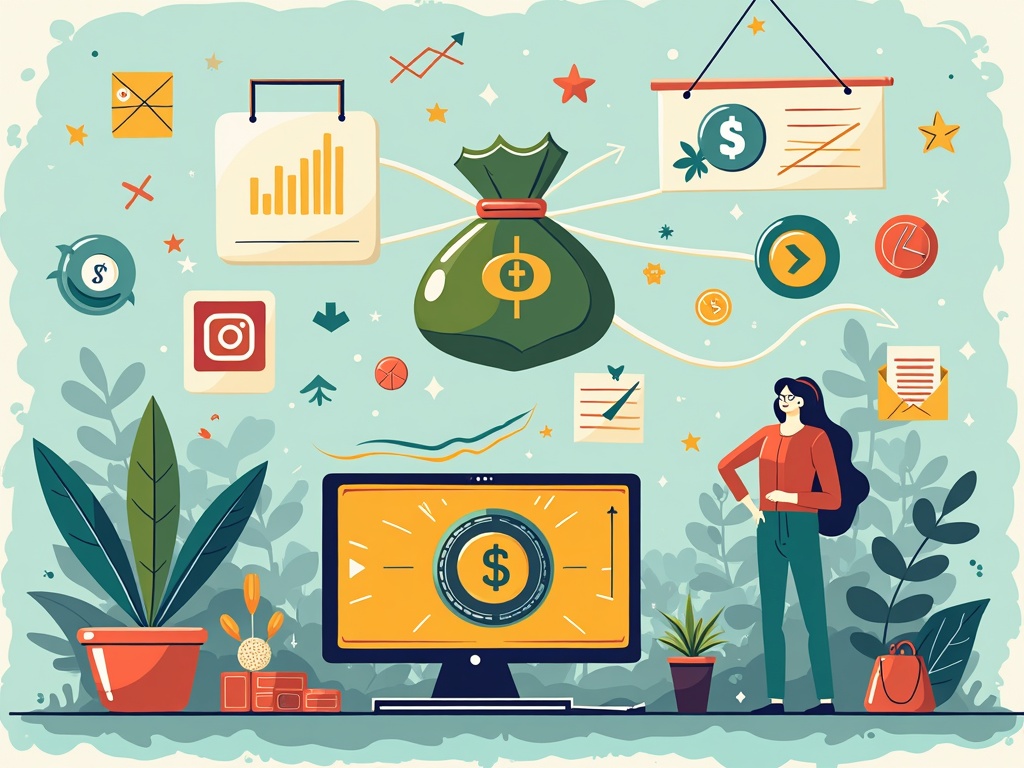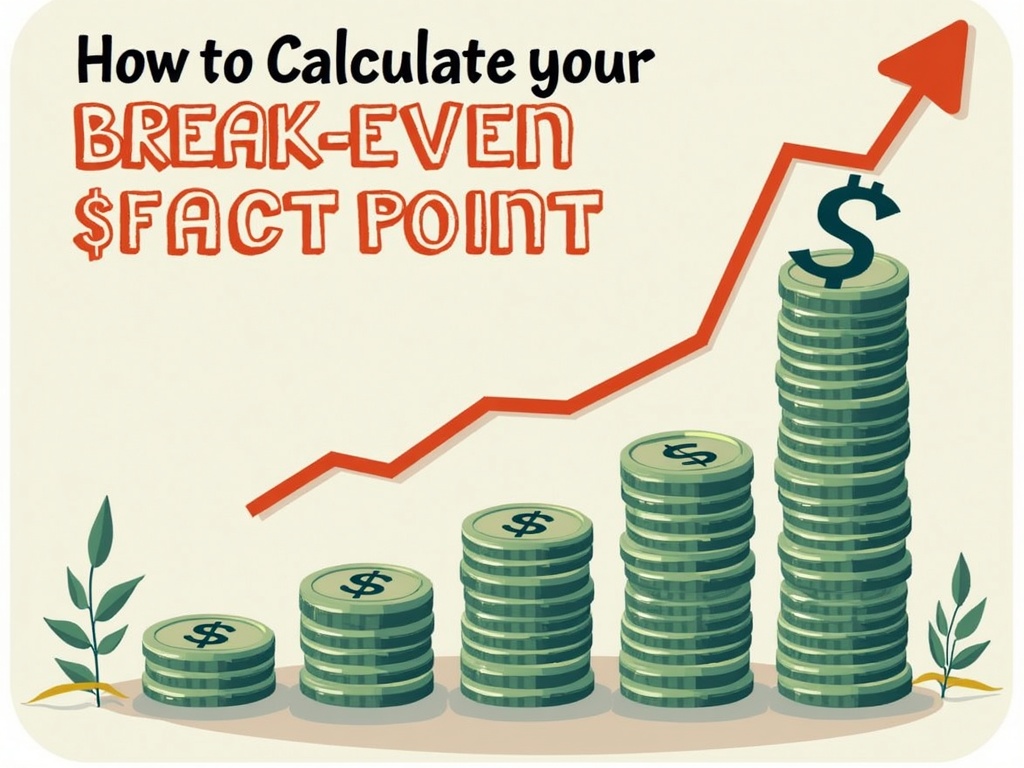How Long Does It Take to Make Your First $1,000 with a Small Business?
So, you’ve taken the plunge. You’ve got a killer business idea, a burning passion, and a whole lot of determination. But the big question looms: How long until you actually see some tangible results? Specifically, how long until you make your first $1,000? Let’s dive into the real world of side hustle earnings timelines and uncover some realistic expectations.
The truth is, there’s no one-size-fits-all answer. The journey to your first $1,000 in business revenue is as unique as your business itself. It can be a sprint for some, a marathon for others, and for a few, it might feel like an uphill climb. But understanding the factors at play can help you set reasonable goals and devise a winning strategy.
Understanding Variables: What Factors Influence the Timeline to $1,000?
Several factors can dramatically impact how quickly you hit that milestone. These variables intertwine to create a complex equation that determines your financial trajectory. Here are some of the most significant:
- Business Model: Are you selling physical products, digital downloads, or services? Each has its own inherent earning potential and scaling capabilities.
- Market Demand: Is there a genuine need for what you’re offering? High demand translates to quicker sales, while a niche offering might require more time to gain traction.
- Marketing Prowess: A stellar product is useless if no one knows it exists. Effective marketing strategies are crucial for driving traffic and converting leads into paying customers.
- Pricing Strategy: Are you pricing your products or services too high, potentially scaring away customers? Or are you underselling yourself, making it harder to reach your revenue goals?
- Time Investment: How many hours are you realistically dedicating to your business each week? Part-time hustles naturally take longer to generate significant income.
- Competition: The level of competition in your market can significantly affect your ability to attract customers and generate sales. Carving out a unique niche or offering superior value is key.
Think of these factors as dials you can adjust to influence your outcome. Careful consideration of each one will put you in a far better position to predict and ultimately shorten your path to that first $1,000.
Business Type Matters: How Do Different Business Models Affect Earning Potential?
The type of business you choose is a major determinant in your earning timeline. Let’s look at a few common examples:
- Freelancing (Writing, Design, Virtual Assistant): Service-based businesses can often generate revenue quickly because you’re directly exchanging your time for money. However, scaling can be challenging as your income is limited by the number of hours you can work. It’s very possible to make your first $1000 within the first month if you hustle!
- E-commerce (Selling Physical Products): This involves sourcing, storing, and shipping products, which can take time and money to set up. Profit margins might be lower due to product costs, and marketing costs can be high in competitive markets. Earning $1000 would likely take multiple months.
- Digital Products (Ebooks, Online Courses): These have a higher profit margin since you only create the product once. However, it takes time to develop and market digital products effectively. You may need an existing audience.
- Affiliate Marketing: Earning commissions by promoting other people’s products. This requires building an audience and establishing trust, which can be a slower process. The timeline is often uncertain, dependent on finding the right audience and product fit.
- Dropshipping: Selling products online without holding any inventory yourself. You don’t have to outlay money for product, but your profit margins (the key to reaching $1000) tends to be lower.
Consider the setup time, potential profit margins, and scalability of each model when choosing your business. A business with lower startup costs and higher profit margins will generally lead to faster revenue generation, but also tend to me more time-intensive.
Startup Costs: How Do Initial Investments Impact Profitability and Time to $1,000?
The amount of money you invest upfront can directly influence how quickly you see a return. Bootstrapping with minimal investment means you keep more of your profits, but it can also slow down your growth.
- Low Startup Costs: Businesses like freelancing or offering services usually require minimal initial investment, allowing you to reach profitability faster.
- High Startup Costs: E-commerce businesses or those requiring specialized equipment can take longer to become profitable, as you need to recoup your initial investment before seeing substantial gains.
Carefully evaluate your startup costs and factor them into your pricing strategy. Consider financing options if needed, but always prioritize keeping your expenses as low as possible in the early stages of your business.
Marketing & Sales Strategies: What Marketing Efforts Accelerate Revenue Generation?
Effective marketing is the engine that drives sales. Without it, even the best products or services will struggle to gain traction. Here are some strategies to accelerate your revenue generation:
- Social Media Marketing: Build a strong presence on platforms relevant to your target audience. Engage with your followers, run targeted ads, and create valuable content to attract potential customers.
- Content Marketing: Create blog posts, videos, and other content that provides value to your target audience and establishes you as an authority in your industry. Optimizing this content for search engines (SEO) is crucial.
- Email Marketing: Build an email list and nurture your subscribers with valuable content and targeted promotions. Email marketing can be highly effective for driving sales and building customer loyalty.
- Paid Advertising: Consider running paid advertising campaigns on platforms like Google Ads or social media to reach a wider audience and drive targeted traffic to your website or landing pages.
- Networking: Attend industry events, join online communities, and connect with potential customers and partners. Networking can lead to valuable referrals and business opportunities.
Always track your marketing efforts to see what’s working and what’s not. Don’t be afraid to experiment and adjust your strategies as needed. The key is to find the marketing channels that provide the best return on investment for your business.
Pricing Your Products/Services: How Does Pricing Strategy Relate to Reaching the $1,000 Mark?
Your pricing strategy is crucial for reaching your financial goals. It’s a delicate balance between attracting customers and maximizing your profit margins.
- Value-Based Pricing: Price your products or services based on the perceived value they offer to your customers. This allows you to charge higher prices and generate more revenue per sale.
- Competitive Pricing: Analyze your competitors’ prices and price your products or services accordingly. This can help you attract customers who are price-sensitive, but it also means lower profit margins.
- Cost-Plus Pricing: Calculate your costs and add a markup to determine your selling price. This ensures that you cover your expenses and make a profit, but it may not be the most competitive pricing strategy.
Consider factors like your target audience, the perceived value of your offerings, and your competitors’ prices when developing your pricing strategy. Don’t be afraid to experiment and adjust your prices based on customer feedback and market conditions.
Time Commitment: How Many Hours Per Week Are Necessary to Dedicate to the Business?
The amount of time you dedicate to your business directly impacts your earning timeline. A part-time hustle will naturally take longer to reach $1,000 than a full-time endeavor.
- Part-Time (10-20 hours/week): Slower progress, suitable for building a side hustle alongside other commitments.
- Full-Time (40+ hours/week): Faster progress, requiring a significant commitment and focus.
Be realistic about the amount of time you can dedicate to your business. Consistency is key, even if you can only dedicate a few hours each week. Schedule specific times for working on your business and stick to your schedule as much as possible.
Industry Benchmarks: What Are Typical Timelines for Different Industries to Reach $1,000 in Revenue?
While every business is unique, understanding industry benchmarks can provide a useful point of reference.
- Service-Based Businesses (e.g., Freelancing, Consulting): Can often reach $1,000 within the first month or two, due to direct exchange of time for money and relatively low startup costs.
- E-commerce Businesses: May take several months or even longer to reach $1,000, due to the time and expense involved in sourcing products, setting up an online store, and marketing to customers.
- Content Creation (e.g., Blogging, YouTube): Can take many months or even years to reach $1,000, as it requires building an audience, creating valuable content, and monetizing your platform through ads, sponsorships, or affiliate marketing.
These are just general guidelines. Your actual timeline may vary depending on your individual circumstances, market conditions, and your ability to execute your business plan effectively.
Scaling Strategies: How Can the Initial $1,000 Be Leveraged for Further Growth?
Reaching your first $1,000 is a significant milestone, but it’s just the beginning. Here’s how you can leverage that initial success for further growth:
- Reinvest in Marketing: Use a portion of your profits to expand your marketing efforts and reach a wider audience.
- Improve Your Products/Services: Invest in upgrading your offerings based on customer feedback and market trends.
- Hire Help: Outsource tasks that are taking up too much of your time, freeing you up to focus on strategy and growth.
- Develop New Products/Services: Expand your product line to meet the evolving needs of your customers.
- Automate Processes: Implement systems and tools to automate repetitive tasks and improve efficiency.
Think of your initial $1,000 as seed money. Use it wisely to nurture your business and cultivate long-term growth.
Avoiding Common Pitfalls: What Mistakes Can Delay Achieving the First $1,000 Mark?
Several common mistakes can delay your progress towards reaching that first $1,000. Avoid these pitfalls to stay on track:
- Lack of a Clear Business Plan: Without a solid plan, you’re likely to wander aimlessly and waste valuable time and resources.
- Poor Marketing: Failing to effectively market your products or services is a surefire way to stifle your growth.
- Inconsistent Effort: Sporadic effort yields sporadic results. Consistency is key to building momentum and achieving your goals.
- Ignoring Customer Feedback: Failing to listen to your customers and adapt your offerings accordingly can lead to dissatisfaction and lost sales.
- Underestimating Expenses: Accurately track your expenses and factor them into your pricing strategy to ensure that you’re making a profit.
Learn from the mistakes of others and proactively address these potential pitfalls to maximize your chances of success.
Real-Life Examples: Showcase Success Stories and Timelines of Achieving the First $1,000
To illustrate these concepts, let’s look at a few real-life examples:
- Sarah, Freelance Writer: Sarah started offering her writing services online. By actively seeking clients on freelance platforms and leveraging her existing network, she made her first $1,000 in just under a month.
- Mark, E-commerce Store Owner: Mark launched an online store selling handcrafted jewelry. He spent time optimizing his product listings, running targeted social media ads, and reaching out to influencers. It took him about three months to reach his first $1,000 in revenue.
- Emily, Online Course Creator: Emily created an online course teaching photography basics. She promoted her course through her blog, email list, and social media channels. It took her a few months of consistent effort to build an audience and generate enough sales to reach $1,000.
These stories demonstrate that with the right strategy, dedication, and a bit of hustle, reaching your first $1,000 is definitely achievable.




